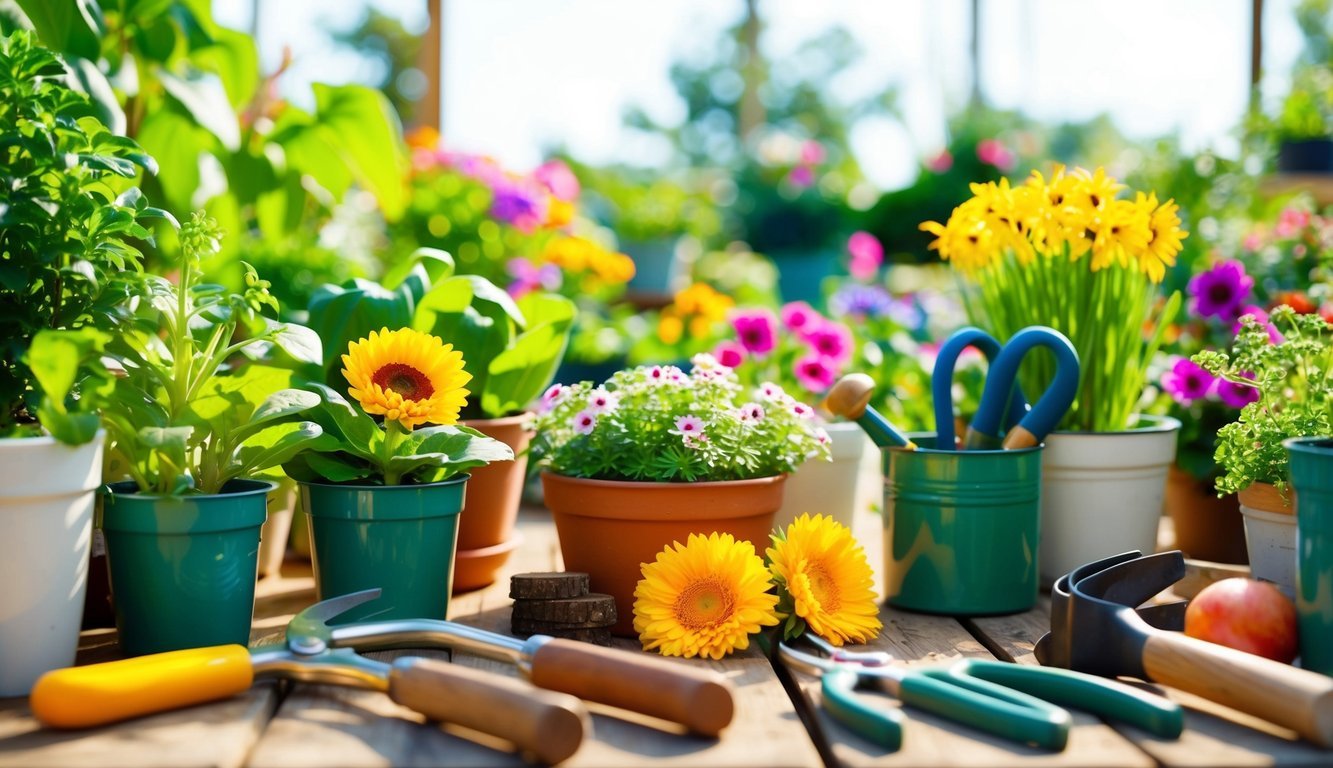
Supporting Local Nurseries
Local nurseries are essential lifelines for gardening enthusiasts, packed with healthy plants, expert advice, and region-specific products.
With the surge in gardening interest lately, the demand for quality supplies and reliable information has never been more pressing.
Join gardening expert Katherine Rowe as we explore the vital role local nurseries play and how they can enhance your gardening endeavors.
For many, a trip to the local garden center feels like stepping into a world of inspiration and tranquility.
These shops do more than just sell plants; they inspire and educate, often fueling a passion for gardening.
They typically offer a rich selection of hardy plants, specially curated for local climates, or they know exactly where to source these plants if they don’t grow them themselves.
Reflecting on my time in graduate school, I fondly remember a small nursery near Athens, Georgia, known as Goodness Grows.
Though it has since closed, the memories persist.
This nursery was a hub for both professional landscape designers and passionate gardeners eager to fill their trucks with well-cared-for plants.
Goodness Grows was a rarity, showcasing native plants and custom soil mixes—an oasis for those who cherish cultivating greenery.
Sadly, numerous long-standing nurseries are closing their doors as owners retire, often without anyone to carry on the legacy.
A notable example is Nuccio’s Nurseries in California, which had to shut down due to similar challenges compounded by diminishing water resources for irrigation.
Rising property costs and stiff competition from large retailers further threaten these local gems.
Nonetheless, many garden centers are flourishing, creatively adapting to the surge in gardening by offering workshops and classes.
Cultivating Seasonal Knowledge
While local garden centers often guarantee the health of the plants offered, responsibility for their ongoing success rests with the gardener.
Independent nurseries take pride in providing well-cared-for specimens along with expert advice on plant care and selection.
In contrast, large retail chains sometimes mislead gardeners with seasonal promotions, offering plants that may struggle in current local climatic conditions.
Trust your gardening instincts and take the time to check growing conditions to ensure success, especially for plants that might be borderline hardy in your zone.
One of the best features of independent nurseries is their eclectic array of species and cultivars, carefully chosen for local growing conditions.
You’re likely to stumble upon unique plants unavailable at big retail chains.
Furthermore, exploring specialty growers online opens the door to a trove of rare choices, including native varieties and edible species.
Resources like Plant Delights, Nurseries Caroliniana, and Walters Gardens can be especially helpful in your quest for something special.
Consider also the joys of starting your own seeds.
This practice presents endless opportunities and allows you to experiment with heirlooms and other unique varieties that pique your interest.
Invest in Quality Soils and Amendments
Small nurseries often offer superior potting mixes and soil blends that are organic and peat-free—options many larger retailers don’t provide, as they typically source from a limited number of suppliers.
This trend also applies to fertilizers and pest control products, where smaller stores frequently carry more organic and plant-based alternatives.
To strengthen soil health for your edible crops, seek out your preferred brands or try creating your own potting mix.
Incorporating compost and leaf mulch can significantly enrich your garden soil over time.
If you haven’t yet dived into composting, this could be the year to begin.
It’s a gratifying way to create a sustainable resource that boosts soil health.
Numerous composting methods exist, from countertop bins to more extensive outdoor setups.
For a more straightforward approach, managing compost piles can be easy, especially in spaces with fewer wildlife concerns.
Compost bins, on the other hand, provide a neat way to keep your materials organized, accommodating various sizes and designs.
Furthermore, be sure to capitalize on the autumn leaf drop.
Instead of discarding leaves, consider leaving them on the ground or collecting them for later.
They can serve as natural mulch, enriching soil and providing habitats for beneficial insects throughout the winter.
Creating leaf mold is another effective method to improve soil health.
Although it takes about six months for leaves to decompose fully, the resulting material is a fantastic soil amendment and can be applied as a top dressing.
In a sea of gardening advice, finding reliable information can present a challenge.
However, this abundance provides ample opportunities for collective learning.
Connect with knowledgeable gardening experts or organizations, whether through online platforms or local community gardens.
Seek out individuals and resources dedicated to gardening education.
By learning from each other, we can create a thriving community of gardeners.
Local nurseries and conscious online vendors supply sustainable tools and materials—from seed-starting equipment to eco-friendly raised beds.
Prioritizing quality resources that utilize renewable materials benefits both gardeners and the environment.
Additionally, consider repurposing items at home to enhance your gardening accessibility.
Ultimately, gardening should not feel prohibitively expensive or complex.
Focus on cultivating what you love and working within your means, and you will contribute positively to your local community and the wider gardening world.
Source: Epicgardening

